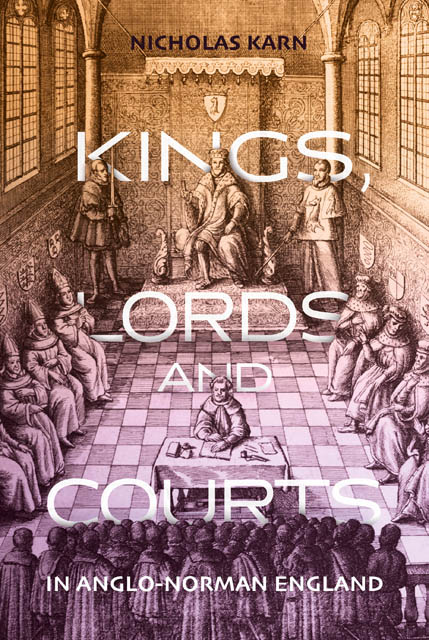Book contents
- Frontmatter
- Dedication
- Contents
- Preface and Acknowledgements
- List of Abbreviations
- Introduction
- 1 Lords and their Dependents in Court: The Later Anglo-Saxon Paradigm
- 2 The Aspirations of Lords in Eleventh- and Twelfth-Century England
- 3 Private Claims and Hundreds in the Later Eleventh and Earlier Twelfth Centuries
- 4 The Division of Hundreds and the Proliferation of Courts
- 5 From Debate within Courts to Debate between Courts: The Origins of Jurisdictional Debate
- 6 Courts, Pleas and Kings in the Early Twelfth Century
- 7 Pleas and Justices in the Early Twelfth Century
- Conclusion
- Appendix: The Evidence for Justices, 1100–54
- Bibliography
- Index
7 - Pleas and Justices in the Early Twelfth Century
Published online by Cambridge University Press: 18 January 2023
- Frontmatter
- Dedication
- Contents
- Preface and Acknowledgements
- List of Abbreviations
- Introduction
- 1 Lords and their Dependents in Court: The Later Anglo-Saxon Paradigm
- 2 The Aspirations of Lords in Eleventh- and Twelfth-Century England
- 3 Private Claims and Hundreds in the Later Eleventh and Earlier Twelfth Centuries
- 4 The Division of Hundreds and the Proliferation of Courts
- 5 From Debate within Courts to Debate between Courts: The Origins of Jurisdictional Debate
- 6 Courts, Pleas and Kings in the Early Twelfth Century
- 7 Pleas and Justices in the Early Twelfth Century
- Conclusion
- Appendix: The Evidence for Justices, 1100–54
- Bibliography
- Index
Summary
The previous chapter set out how the distinction between curia and placitum appeared, and how it was important for the definition of what lords and others claimed. From the early twelfth century the distinction was fundamental to how claims in kinds of legal business were described. Among the most significant applications of these categories was their use in relation to the idea of the pleas of the crown. This was one of the key claims used by kings to project their authority out into the shires, and it has been prominent in the historiography. It has tended to be understood in terms of how royal claims developed over time and the strength of kingship, from the statements about the king’s interests in 2 Cnut to the more comprehensive coverage in the Assize of Clarendon and even in Glanvill. There has been much debate over what the changing lists of royal interests meant, and what those changes indicate about the developing strength and authority of kings. The list of royal interests went through distinct phases in how it was described and categorised, and it is likely that these changes indicate something about how these interests were managed over time. In the law 2 Cnut 12, there is a list of the king’s interests which described them quite vaguely as rights or gerihta (or as iura in the Quadripartitus translation); it is only in the continuation of this passage in 2 Cnut 15 that a wite or financial penalty is noted, which indicates that the king could draw some financial benefit from these matters. By the later eleventh century, the interest of the king in some of these matters could be described as a forisfactura or forfeiture, which again draws attention to the financial aspect of the king’s involvement in these matters. Much of the historiography on crown pleas and their antecedents has focussed on the content of the claims that kings would raise, and has taken the number of themes that kings called their own as an index of the strength of kingship. This approach regards rights, forfeitures and pleas as essentially synonyms.
- Type
- Chapter
- Information
- Kings, Lords and Courts in Anglo-Norman England , pp. 175 - 203Publisher: Boydell & BrewerPrint publication year: 2020



